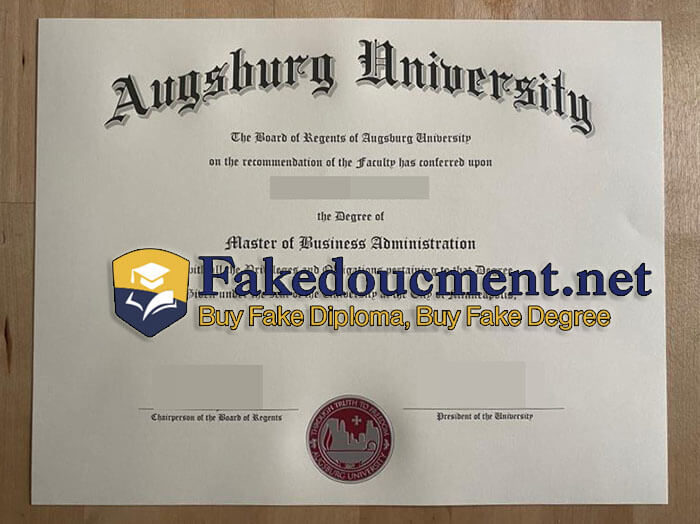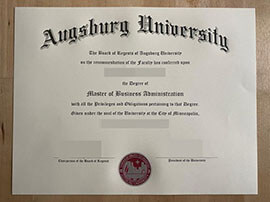
Where make realistic Augsburg University degree certificate online? Why people would like to buy a realistic Augsburg University diploma certificate online? The best way to buy a realistic Augsburg University degree certificate online? Augsburg University is a private university in Minneapolis, Minnesota. It is affiliated with the Evangelical Lutheran Church in America. It was founded in 1869 as a Norwegian-American Lutheran seminary known as Augsburg Seminarium.
Today, the university enrolls approximately 3,000 undergraduate and 800 graduate students. Augsburg is known for its emphasis on service learning; volunteering in the community is both an instructional strategy and a required part of a student’s coursework.
Norwegian Lutherans founded Augsburg as a seminary. It was named after the Augsburg Confession of 1530, the primary confession of faith presented by Lutherans in Augsburg, Germany, and contained in the Book of Concord of 1580. Augsburg Seminarium opened in September 1869, in Marshall, Wisconsin.
Three years later, it moved to Minneapolis, changing its name to The Norwegian Danish Evangelical Lutheran Augsburg Seminary to reflect the name of the church body that sponsored the school. Undergraduate classes began in the fall of 1874, with the first class graduating in 1879. In 1892, the school’s name was shortened to Augsburg Seminary.
In 1893, reacting to what it deemed overly hierarchical elements in the Norwegian church, Augsburg leaders organized the “Friends of Augsburg”, which by 1897 had coalesced to form a new Lutheran denomination, the Lutheran Free Church, a body that flourished for 70 years. During its early years the college and seminary served men only; women were first admitted in 1921. To further expand its mission, a high school level Augsburg Academy was provided on the campus. It closed in 1933.
Augsburg Seminary remained the school’s name until 1942, when it was officially changed and expanded to Augsburg College and Theological Seminary, a name that had been informally used since the 1910s.
When the Lutheran Free Church merged with the much larger American Lutheran Church (ALC) in 1963, Augsburg Seminary merged with the ALC’s Luther Theological Seminary, later renamed Luther Seminary. The name of the remaining undergraduate college became Augsburg College. In 2017, the name of the school officially became Augsburg University.
August Weenaas was Augsburg’s first president (1869-1876). Weenaas recruited two teachers from Norway—Sven Oftedal and Georg Sverdrup. These three men clearly articulated Augsburg’s mission: to educate Norwegian Lutherans to minister to immigrants and to provide such “college” studies as would prepare students for theological study.
In 1874, they proposed a three-part plan: first, train ministerial candidates; second, prepare future theological students; third, educate the farmer, worker, and businessman. The statement stressed that a good education is also practical. Augsburg’s next two presidents also emphatically rejected ivory tower concepts of education. This commitment to church and community has led to Augsburg’s theme of over 130 years: Education for Service.
Hillary Clinton campaigning at Augsburg, two days before Super Tuesday 2008.
Flags fly at Augsburg, during the 25th annual Nobel Peace Prize Forum (2013).
This seminarian focus began to change after World War I. In 1911, George Sverdrup Jr. became president. He worked to develop college departments with an appeal to a broader range of students than just those intending to be ministers.
In 1937, Augsburg elected Bernhard Christensen, an erudite and scholarly teacher, to be president (1938-1962). His involvement in ecumenical and civic circles made Augsburg a more visible part of church and city life. After World War II, Augsburg leaders made vigorous efforts to expand and improve academic offerings. By mid-century, the undergraduate college had become a larger part of the institution than the seminary and received the most attention.






